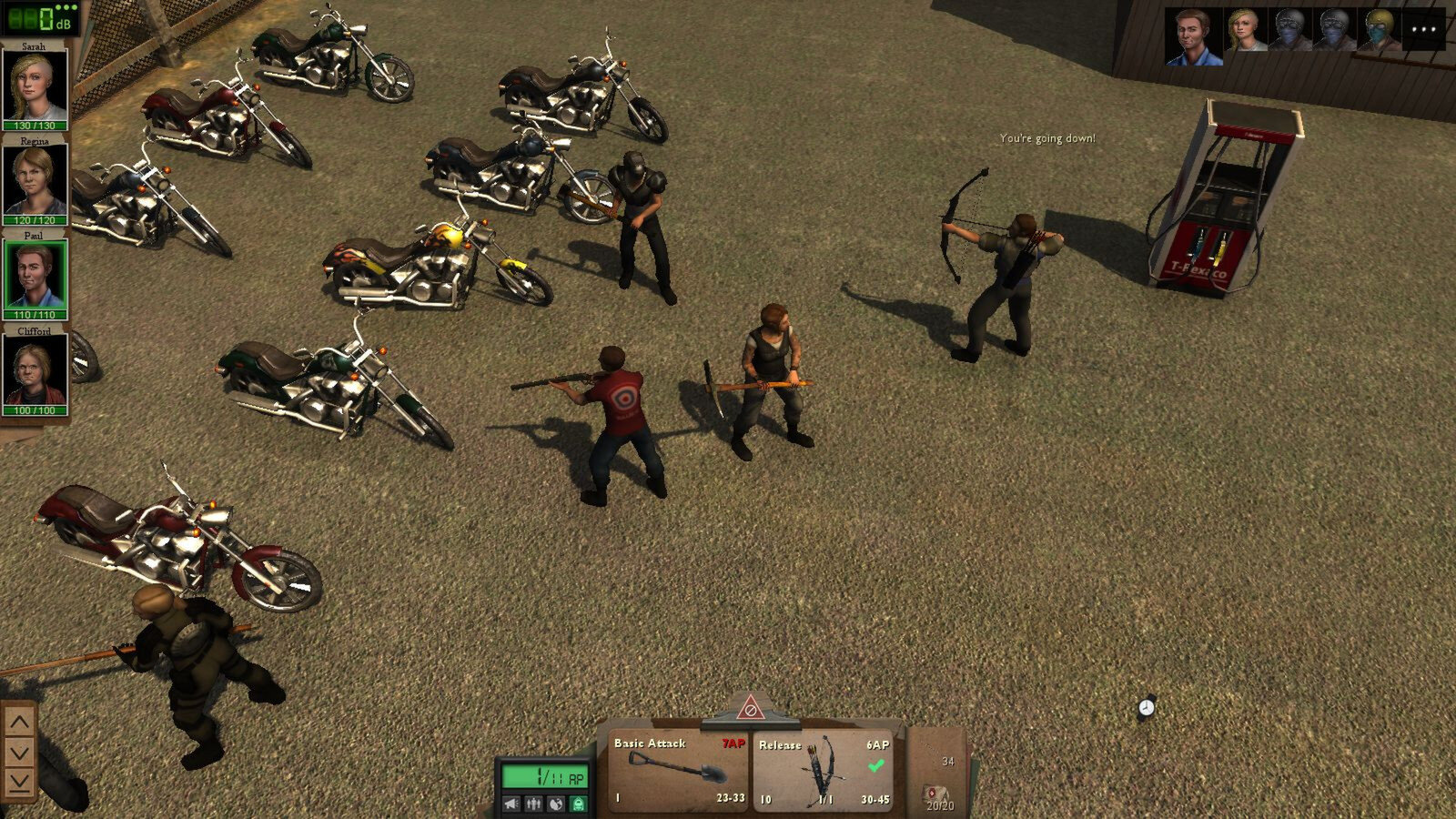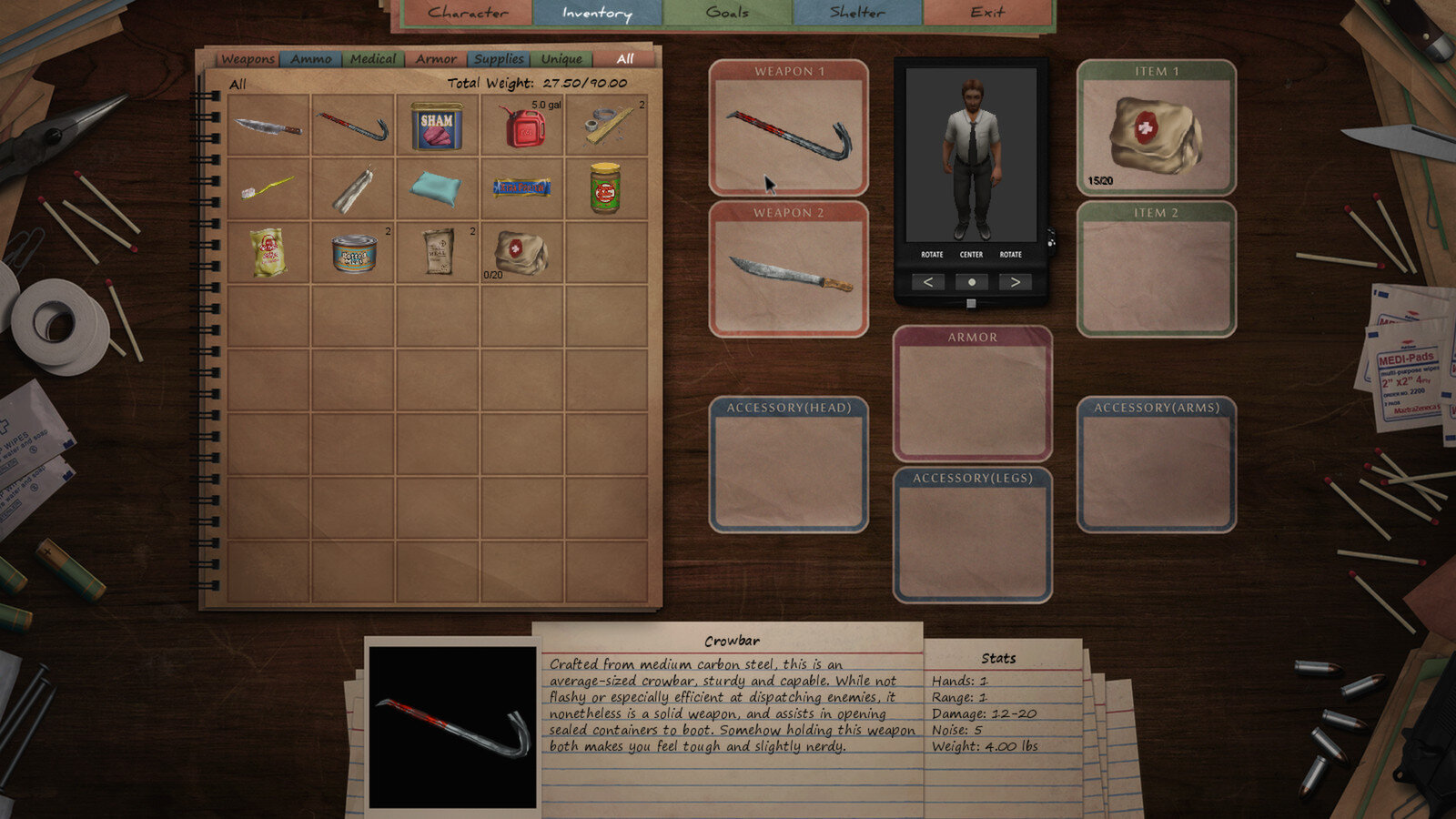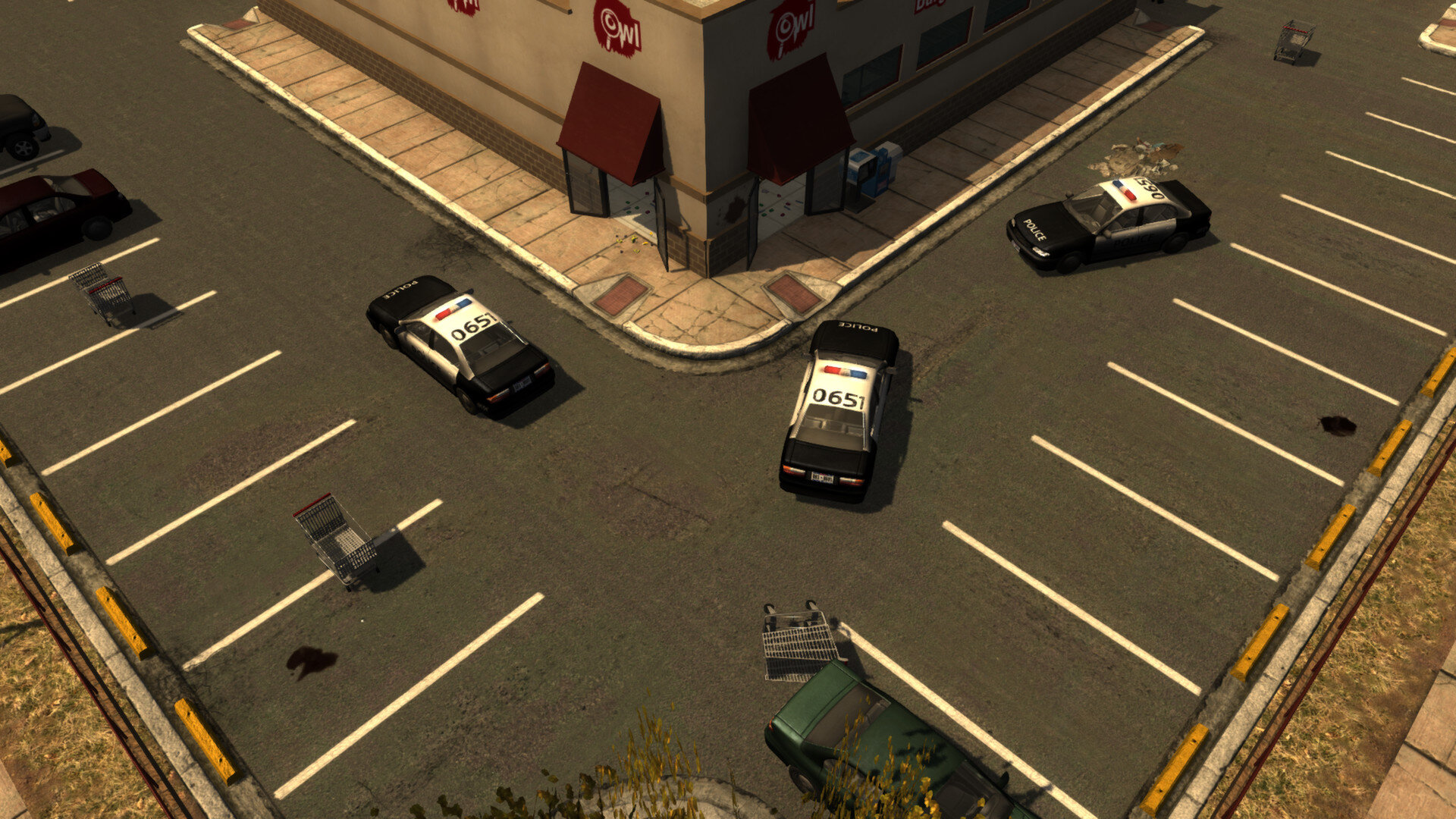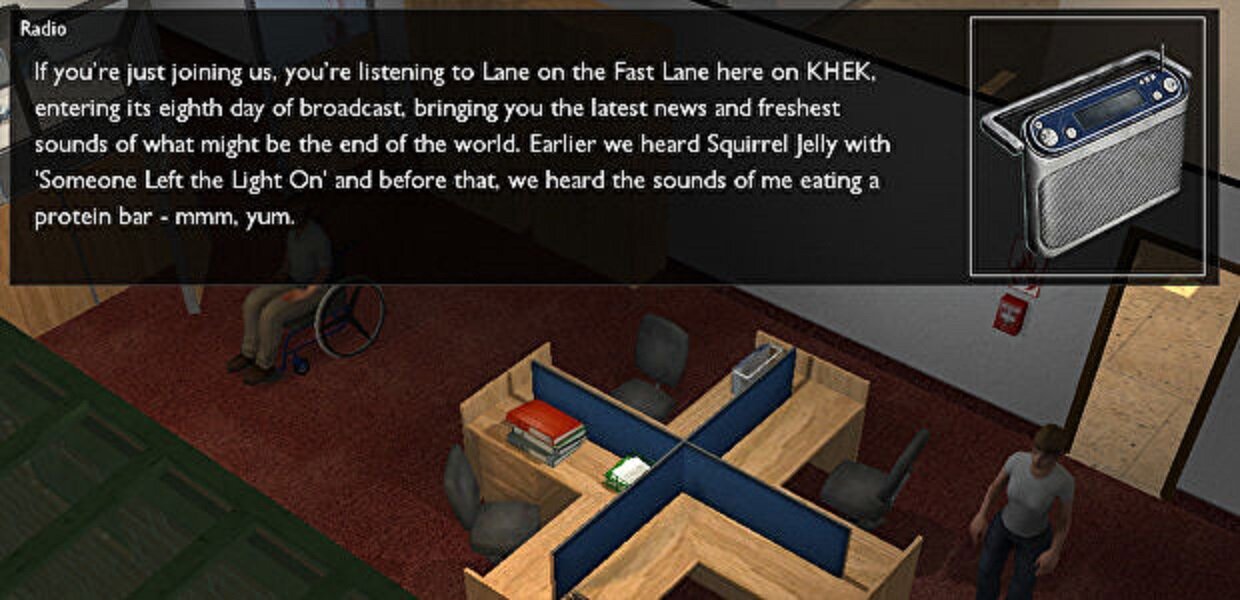Dead State
Release Date: December 4, 2014 (Dead State: Reanimated released May 13, 2015)
Developer: DoubleBear Productions
Platform: PC
Genre: RPG
Engine: Torque
Role: Project Lead
Dead State was the first game ever developed by DoubleBear Productions, which was an indie game studio started by me and Annie VanderMeer in our house. From about 2009 to 2012, it was being worked on by a handful of people and pretty much funded out of pocket. It was successfully funded on Kickstarter for a final development budget of about $330,000, and from that we created a fully-fledged RPG with a reactive story and characters, a base-building component, a turn-based strategy system, and even a political/leadership sim.
I worked on it full-time as the Project Lead and was essentially the only full-time designer on the project for most of its development. I worked with art and engineering to build out the dialogue and crisis event tools, the item editor, the world map system, the NPC/AI editor, random encounters, base mechanics, loot systems, and probably a few more I’m forgetting. I did about 90% of the branching dialogue, reactive barks, lore and other text. I designed the majority of the levels and encounters. And I also handled management of the studio, finances, and project leadership - just a whole lot of hats on that one.
The game was a zombie survival game with an emphasis on the human side of survival, exploring themes of tribalism, the psychological impact of disasters, the good and evil humans can do in crisis, and the burdens of leadership. It was inspired by George Romero’s Dawn of the Dead and my own experiences living through Hurricane Andrew in 1992. The zombies were a disaster, an obstacle, a problem to be overcome. The game focused on the survivors of a societal breakdown - most of them normal people with no combat training. The player had to lead the shelter not only by procuring supplies, but also convincing others of their ability to lead and sometimes making deals and alliances with other strong personalities within the shelter - failure to do so could lead to allies leaving or even insurrection.
Crisis Events simulated a political negotiation between you and the other sub-leaders in the shelter. Depending on your previous decisions, dialogue skills, and relationship with these leaders, these events could boost the group’s morale or kill faith in your leadership.
To those in the know, $330k may not sound like enough to make a 60+ hour RPG and you would be sort of right. It was very ambitious and probably could have used a few more people working a few more months to get it up to a higher Metacritic score. However, we did eventually release a major update with free content additions and quality of life changes a few months after the initial release under the name Dead State: Reanimated. For an indie game with a small budget, the game was a success financially - however, the thought of doing a Dead State 2 or something on that scale after the long hours put into our first RPG was definitely off the table.
The World Map. Between events, encounters, and levels, there were almost 100 hand-crafted locations in all.
Because of the lack of personnel and resources, I pretty much learned how to do almost anything connected to making an RPG or running a game company and team on a budget. Ultimately, while it was a very taxing project, it’s paid off in experience and the satisfaction of finishing a personal project from scratch. It’s definitely one of the highlights of my career.






